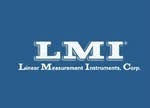Universal Gage Interface
Universal Gage Interface
The Universal Gage Interface (UGI) is a standard for the communication between gauge hardware and software. It specifies the protocols and data formats that should be used for the exchange of information between gauges (such as calipers, micrometers, and dial indicators) and computer systems. The UGI standard allows different types of gauges from different manufacturers to be connected to and used with a variety of software systems, enabling the integration of gauge measurements into a wide range of manufacturing and quality control processes.
UGI Software – SealGap Data Collection Application with Charts.
UGI Software – Glass Data Collection Application.
UGI Software – Fixture Application Data Collection.
UGI Software – SealGap Data Collection Application with Summary Screen.
UGI Software – SealGap Application Collection Screen.
LMI’s UGI software integrates our wireless gauges with a graphically-driven user interface that makes data collection a breeze.
The software allows users to tailor partfiles based on the part/vehicle being measured. To create a partfile, users are guided through five setup screens that cover the naming/description of the partfile, the gauges and spec limits used in the partfile, the graphics that will serve as a roadmap for the operator/auditor, the inclusion of trace/non-measurement inputs, and the creation/customization of the data export. UGI also offers password-protection of partfiles so only the users with correct administrative privileges can edit partfile parameters (spec limits, number of measurement points, etc.).
Quick and Easy Setup Programs
| Assign global characteristics. Set offsets, spec limits. Setup groups or components. Create user inputs and notices. |
LIVE Readings
| Interactive runtime screens.
Live calculations. Summary screen reports. |
Custom Exports
| Custom data export formats.
Write data to multiple locations. |
LMI Wireless Utility Software
The LMI Wireless Utility (WU) is used to configure, zero, and re-master LMI Wireless Gauges. In addition to this, the new WU can send readings to an Excel spreadsheet for “quick and simple” data collection. Download the latest version .
The MobileCollect USB Base driver can be downloaded .
| Software Specfications For LMI UGI and LMI Wireless Utility: | |
| Minimum Computer Specifications:
– Screen Resolution: 1280×800 – Memory needed: 8GB – Processor Speed needed: Intel i3 1.8GHz – Serial COM Port: 1 (1 COM Port/ LMI System) – USB Ports: minimum 2 USB 2.0 – Operating System: Windows 7 Home Basic (32 Bit/64 Bit)
|
Recommended Computer Specifications:
– Screen Resolution: 1280×800 – Memory: 16GB + – Processor Speed: Intel i7 3.4GHz – Serial COM Port: 2 (1 COM Port/ LMI System) – USB Ports: 4 USB 2.0 – Operating System: Windows 10 Professional (32 Bit/64 Bit)
Note: For optimal performance Recommended Specifications should be followed. |
| Installation and Runtime User Requirements:
– Administrative rights are necessary for installation purposes. – Basic user rights are necessary for application use. – For Windows 10 System Administrative rights are required. |
|
Glass Applications
LMI has been a measurement solutions provider to the glass industry for more than 20 years. Customers such as AGC Automotive, Pilkington, NSG, Fuyao, and Vitro have standardized on the use of LMI measurement tools for their glass measurements.
These tools include the LMI 241-B gauge which measures both size and form of the glass simultaneously. The LMI 241-B attaches to the LMI 776 block mounted at each checkpoint location to measure the size and form of glass.
The patented mounting block system insures that the glass is measured at the same location each time. Gage R&R of this system are usually less than 5%. Constructed out of aircraft aluminum and hardened steel, the LMI 241-B gauge is designed specifically for shop floor use.
















